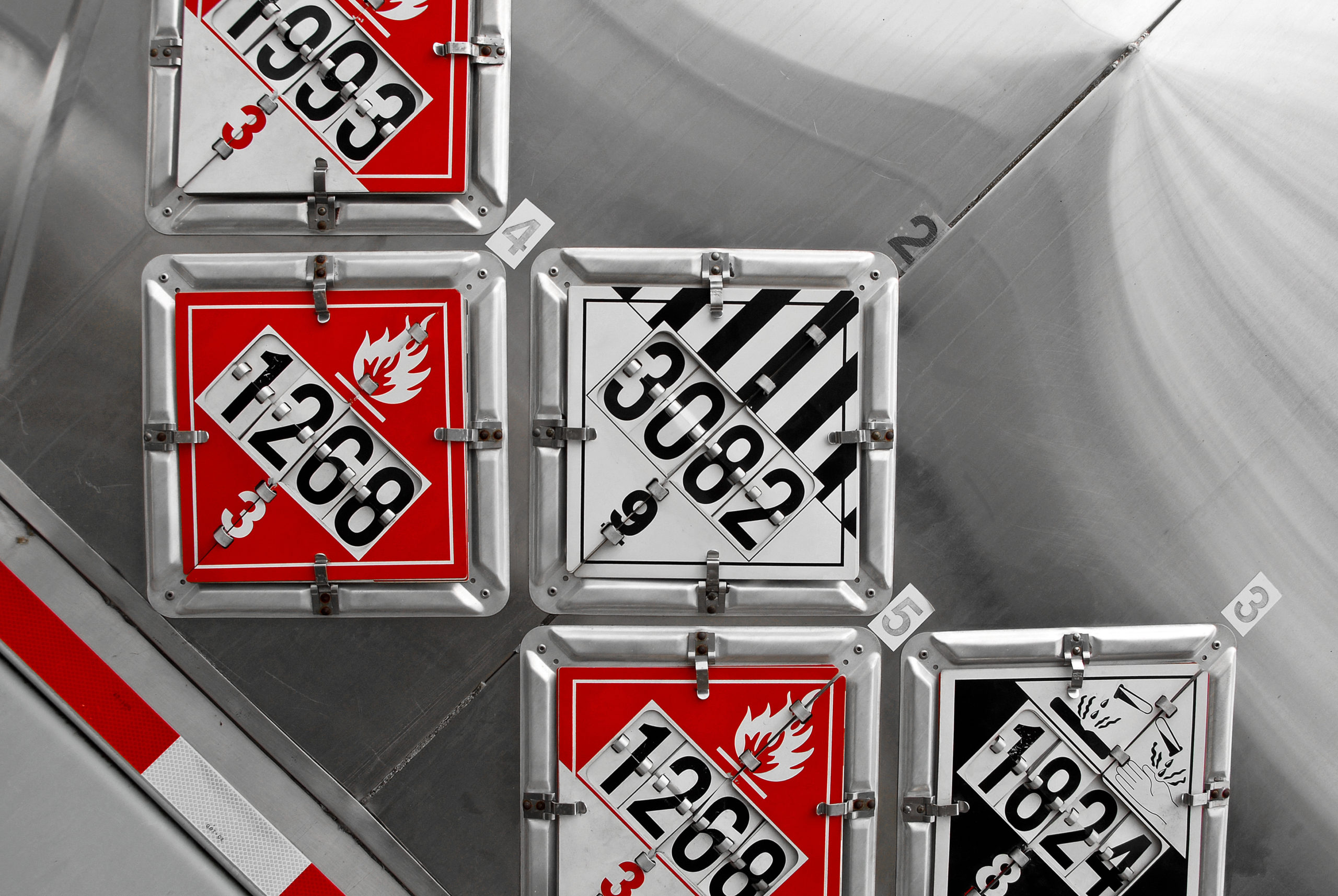No products in the cart.
Hazard Communication: Container Labeling, Transportation, and Storage
$15.00
Imagine that as you are driving down Route 66, you see a tractor-trailer stopped on the side of the road and it appears to leak. You have driven one of these vehicles for work in the past and see that emergency personnel have not yet arrived. You decide to pull over to see how you can help. As you are heading to talk with the driver, you make a note that there are several placards (signs) on the truck labeled corrosive 8 and also the number 1789. You are unsure of exactly what the substance is but immediately you know from the signage that this is a corrosive hazardous material and will cause damage if it comes in contact with the skin or eyes. You reach the driver who is well prepared with his emergency response guide for what you find out is hydrochloric acid. Both of you put on proper PPE from his truck and work together using a spill kit to contain the spill as best as possible until more help arrives.
The signs found on the truck were an example of labeling that is used all over the world to indicate the hazards of a material. OSHA and the Department of Transportation have set clear guidelines, rules, and regulations on how to properly label, store, transport, and handle various types of hazardous materials (29 CFR 1910.120, 49 CFR Parts 172 & 173), as well as several other standards related to specific transport and storage requirements of hazardous materials (29 CFR 1910.110, 29 CFR 1910.111, 29 CFR 1910.119, 29 CFR 1926.55, and 29 CFR 1926.152).
This course will introduce DOT’s nine hazard classes for hazardous materials and discuss the responsibilities of the shipper and carrier in the transport of these materials. In addition, this course will discuss all aspects of container labeling, specifically placarding and ID numbers including what they are, what they tell us, and when and where they are required. Finally, this course will discuss how to properly store some common hazardous materials used often in industry including flammable liquids, liquified petroleum gases, and anhydrous ammonia.
Keywords: hazard communication, hazcom, ghs, container labeling, hazard communication standard, dot, hazard communication program, hazard communication training, hazard communication labels, hazardous communication program, ghs secondary container labels, ghs labels for secondary containers, ghs container label, container storage, ghs compliant labels, ghs container labels, container label, container labels, ghs compliant, container transportation
